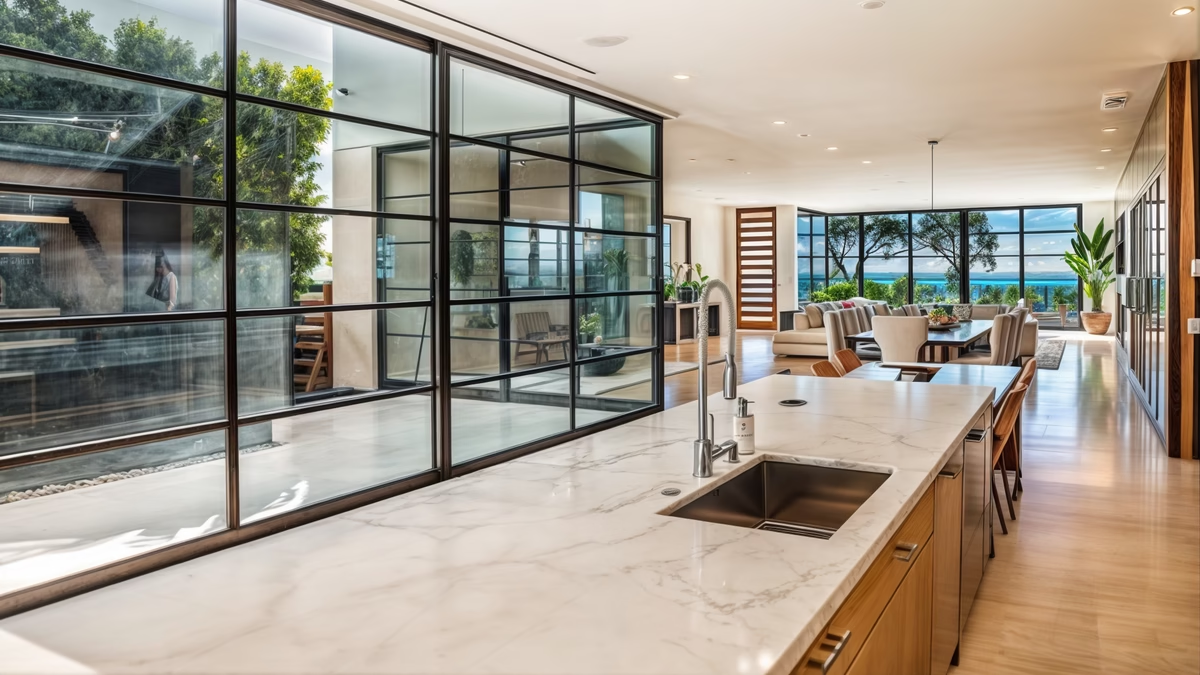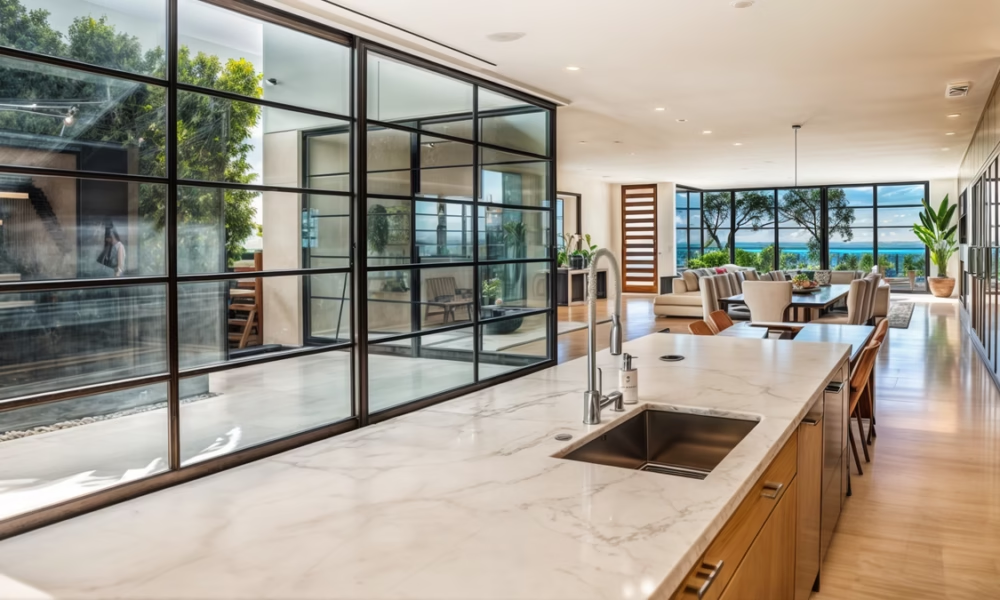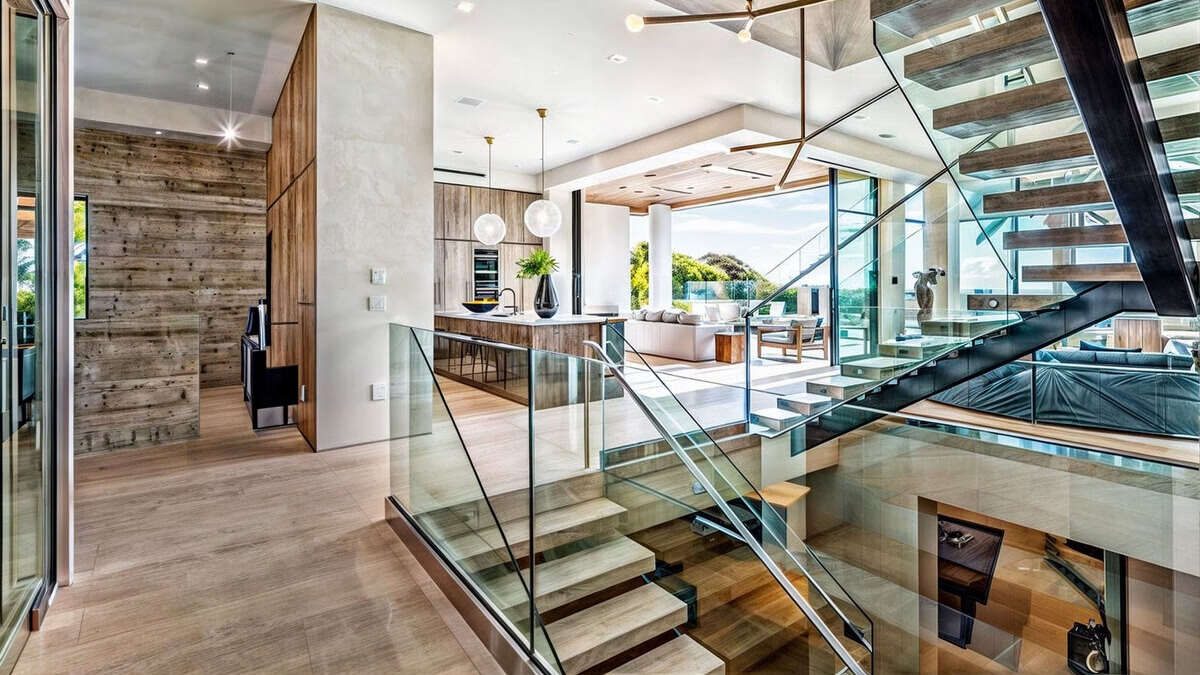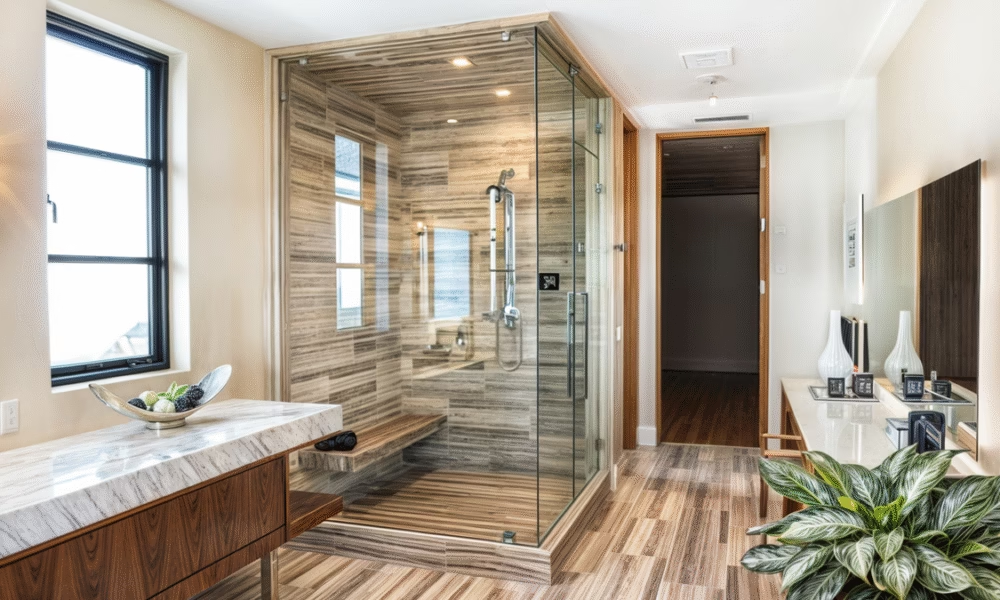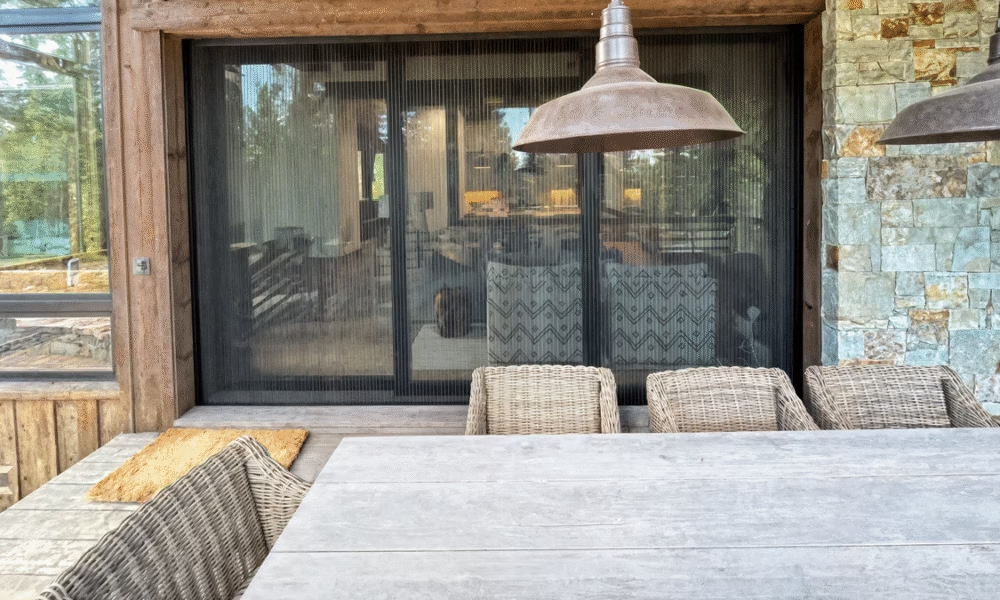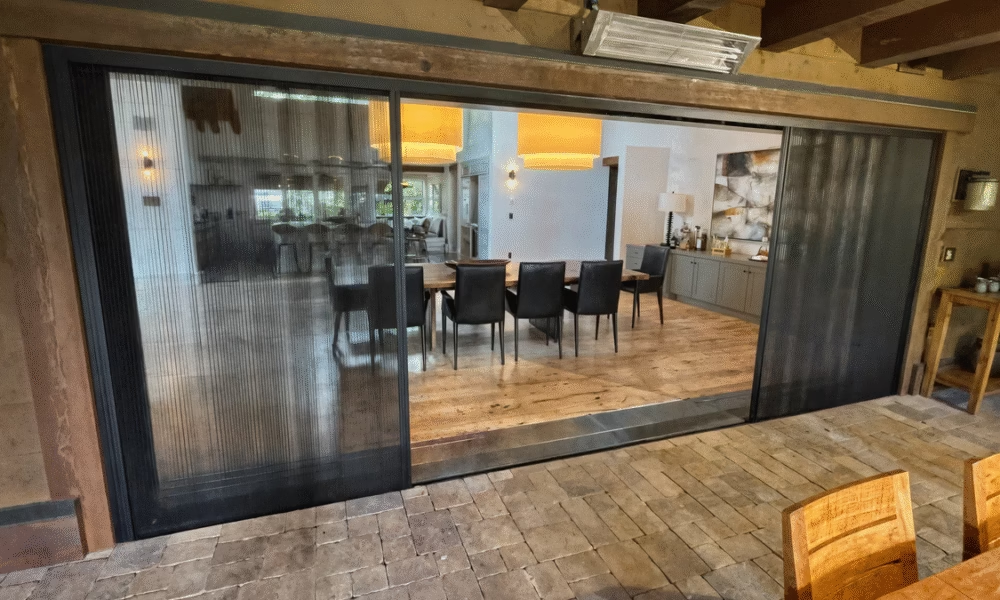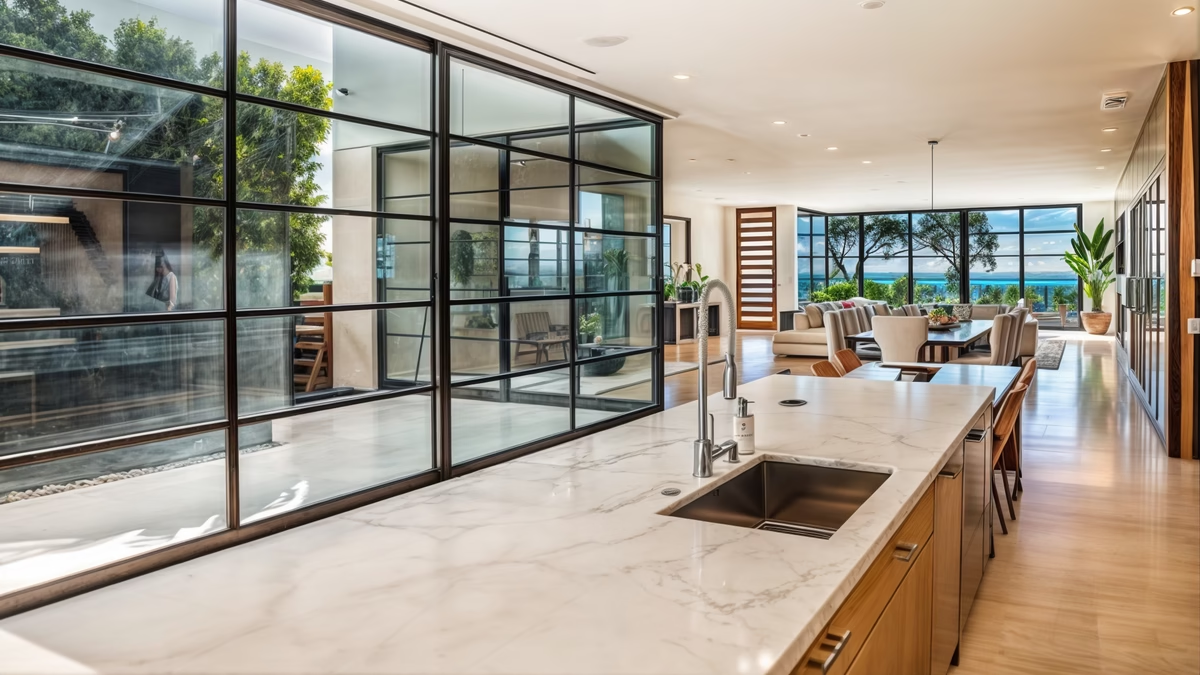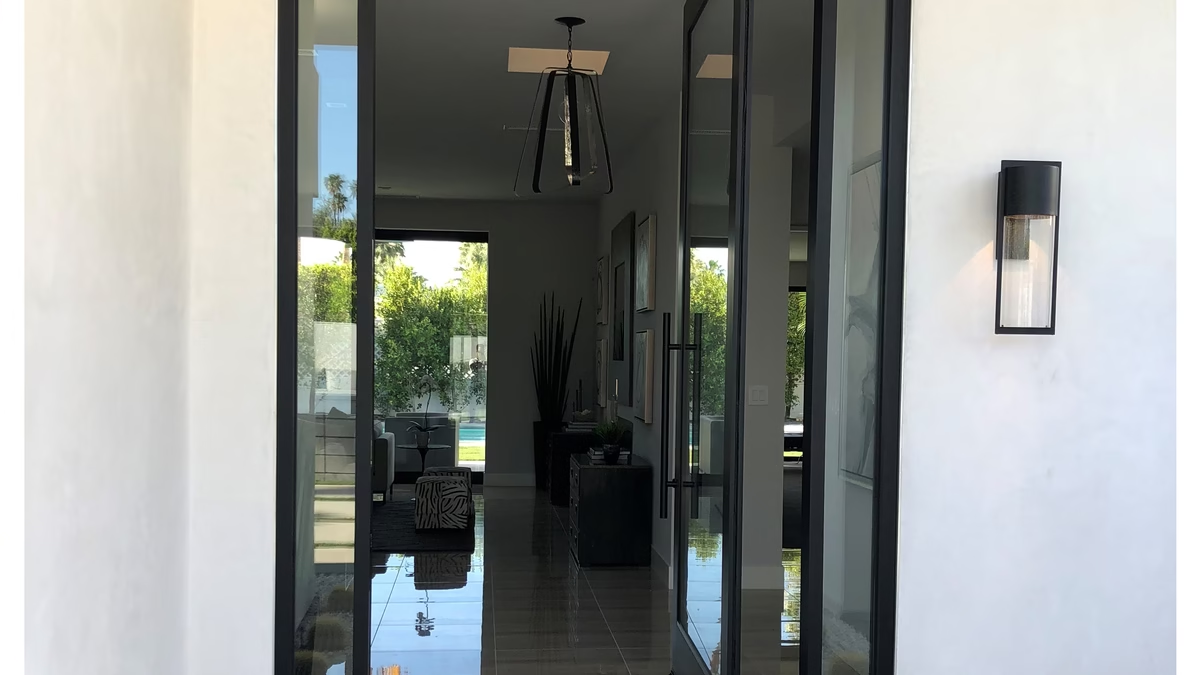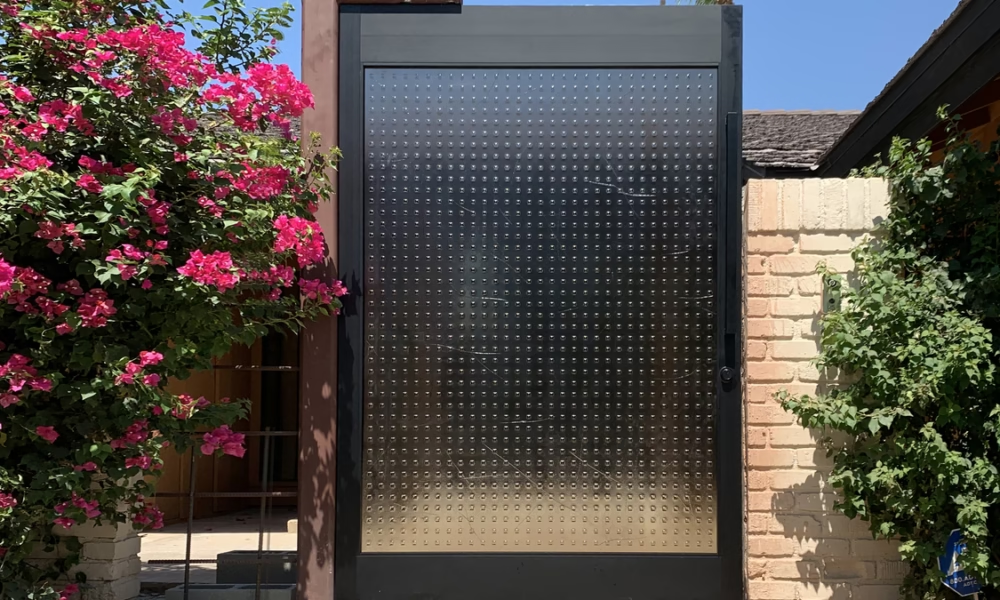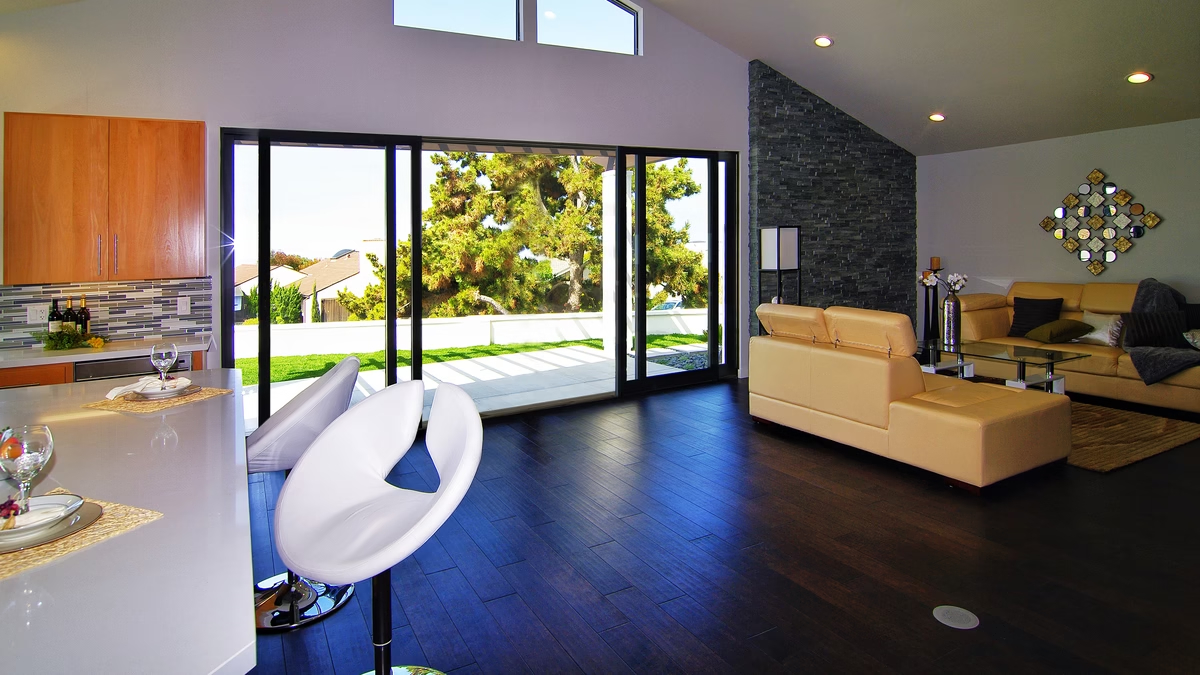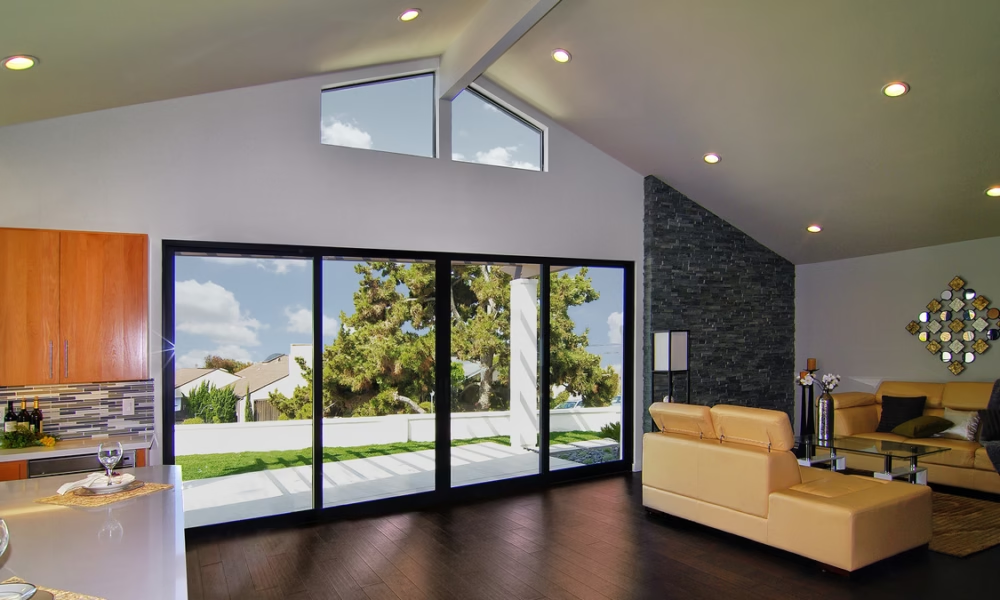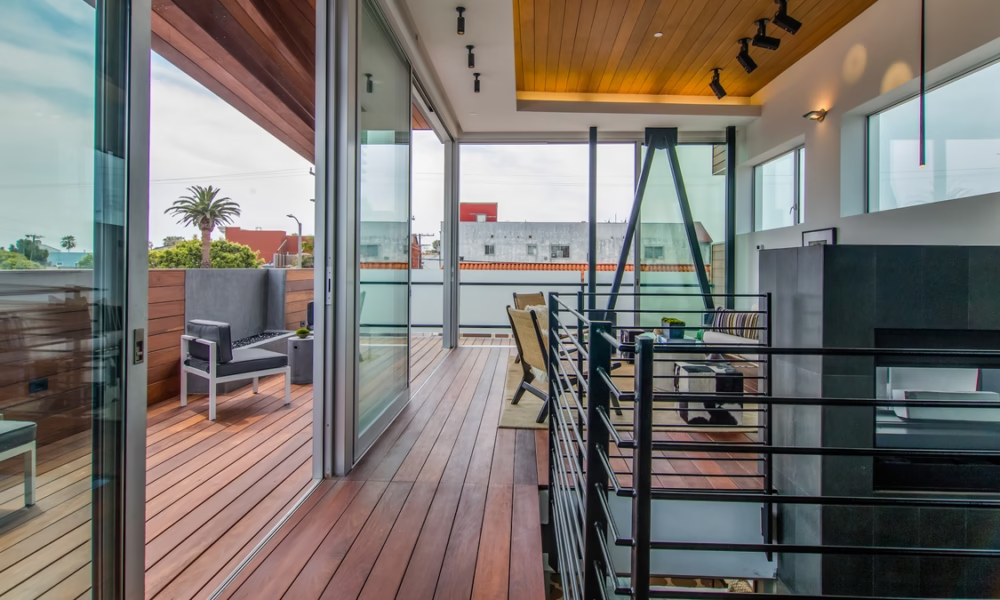-
Dec, Tue, 2025
What Is Low-E Glass and Why Is It Essential in Modern Windows?
Glass is one of the most important materials in any modern façade or window system. It not only defines the visual identity of a project, but also has a direct impact on interior comfort, energy consumption, and the long-term durability of surrounding finishes.
Among today’s high-performance solutions, low-E glass (low-emissivity glass) has become the industry standard for projects seeking better thermal performance and improved energy efficiency, both in residential applications and commercial buildings.
In simple terms, low-E glass is a type of glass with a microscopic, transparent coating that controls how heat moves through the glass. This coating allows visible light to pass through but reduces the transmission of infrared (heat) and ultraviolet (UV) radiation. This helps interior spaces maintain a more stable temperature and better protection against solar exposure.
Below, we explain what low-E glass is and why it’s essential if your aluminum and glass systems require high performance.

Low-E Glass Meaning: A Simple Explanation for Architects and Homeowners
The term low-E comes from low emissivity. Emissivity refers to a material’s ability to emit energy in the form of heat.
- A material with high emissivity easily releases the heat it absorbs.
- A material with low emissivity (low-E) reflects a large portion of that heat instead of allowing it to pass through.
Applied to architectural glass, this means that low-E glass is designed to reflect infrared heat back toward where you want to retain it:
- In winter: it reflects interior heat back inside.
- In summer: it reflects exterior heat away from the building.
At the same time, low-E glass maintains high levels of visible light transmission, ensuring natural daylight without compromising interior comfort. It also reduces UV radiation, helping prevent fading and deterioration of furniture, flooring, and textiles.
In other words, when someone searches for “low E glass meaning” or “What is low E glass”, the simplest and most accurate explanation is: “It’s a glass with a special coating that improves the energy efficiency of windows and façades by controlling heat transfer, without sacrificing natural daylight”.
How Low-E Glass Works: Solar Spectrum, Emissivity, and Thermal Control
To truly understand why low-E glass is so efficient, it’s important to examine how glass interacts with solar energy. Sunlight isn’t a single type of energy. It’s composed of three distinct ranges that affect windows and façades in different ways.
- Ultraviolet Radiation (UV): This is the portion of the spectrum responsible for fading and deterioration of furniture, flooring, textiles, and interior finishes. Although it represents only a small percentage of solar energy, its long-term impact is significant in spaces with high sun exposure.
- Visible Light: This is the part of the spectrum we perceive as natural daylight. High-quality glass should allow visible light to enter without causing excessive glare.
- Infrared Radiation (IR): This is the energy we experience as heat. It’s divided into two types: short-wave IR, coming directly from the sun; and long-wave IR, emitted by warm objects inside a building like people, appliances, heating systems, and warm surfaces.
The Role of Emissivity
Emissivity refers to a material’s ability to emit energy in the form of heat.
- Standard glass has high emissivity, allowing heat to transfer freely.
- Low-E glass has low emissivity, meaning it controls thermal radiation and reflects heat toward the most beneficial side depending on the season.
A low-E coating is up to 500 times thinner than a human hair, yet it drastically improves the glass’s thermal performance.
How Low-E Works Throughout the Year
- In Winter: Low-E glass reflects interior heat back into the room, reducing heat loss and helping maintain a stable indoor temperature with less reliance on heating systems.
- In Summer: It reflects a large portion of the sun’s heat away from the building, reducing solar heat gain and lowering the cooling load on HVAC systems.
Because of how it interacts with the solar spectrum, low-E glass provides:
- Better energy efficiency in any climate
- Reduced heat transfer through the glass
- UV protection
- Improved interior comfort
- Lower energy costs
- Natural daylight without compromising thermal insulation
Types of Low-E Coatings: Passive Low-E vs. Solar Control Low-E
Not all low-E glass performs the same. Its efficiency depends largely on the type of coating applied and the manufacturing process behind it. In modern architecture, selecting the correct low-E coating is essential to achieve the right thermal performance based on climate and project needs.
There are two main categories of low-E glass:
1. Passive Low-E (Hard-Coat)
This coating is applied during the float glass manufacturing process, when the glass is still at very high temperatures. The coating “fuses” into the glass surface, creating a durable and resilient layer.
Key features:
- Highly durable and scratch-resistant
- Allows more solar heat gain
- Ideal for cold climates that benefit from passive heating
- Can be installed on surface #3 or #4 of an IGU
✅ When it’s Recommended: In regions with long, cold winters where capturing solar heat is advantageous.
2. Solar Control Low-E (Soft-Coat)
This coating is applied after the glass is manufactured, using a process called MSVD (Magnetron Sputter Vacuum Deposition) inside vacuum chambers. It delivers superior thermal performance but must be protected inside an IGU.
Key features:
- Much lower emissivity (better insulation)
- Excellent solar control: blocks heat and UV radiation more effectively
- Higher overall energy efficiency in most climates
- Typically installed on the #2 surface of the IGU
✅ When it’s Recommended: In almost all regions of the U.S. and Latin America, where reducing cooling loads and improving energy efficiency is a priority.
Feature: | Hard-Coat (Passive): | Soft-Coat (Solar Control): |
Durability: | Very high | Must be inside an IGU |
Solar Control: | Low | Excellent |
Heat Gain: | High | Low |
Energy Efficiency: | Medium | Very high |
Ideal Application: | Cold climates | Warm or mixed climates |
Visible Light: | High | Slightly lower |
In most modern residential and commercial projects, soft-coat solar control low-E coatings are the most efficient choice because they provide:
- Superior thermal insulation
- Lower UV radiation
- Reduced solar heat gain
- Better indoor comfort and energy savings
Low-E hard coats continue to be used, but mainly in applications where maximizing solar heat gain is beneficial in cold environments.

Where Low-E Coatings Are Placed Inside an IGU (and Why It Matters)
For low-E glass to perform correctly, it’s not enough to select the right type of coating. Its placement inside the insulated glass unit (IGU) is equally important.
A standard double-pane IGU has four possible surfaces:
- Surface #1: the exterior face exposed to the outdoor climate
- Surface #2: the internal face of the first lite, facing the airspace
- Surface #3: the internal face of the second lite, also facing the airspace
- Surface #4: the interior face of the glass, inside the building
Thermal and solar performance can change significantly depending on which surface receives the low-E coating.
Solar Control Low-E → Best on Surface #2
- Soft coat solar control low-E coatings perform best on surface #2, because they:
- Block most of the infrared radiation entering from the exterior
- Reduce solar heat gain in warm or mixed climates
- Maintain high visible light transmission while lowering heat load
For this reason, low-E coatings are applied to this surface for most modern residential and commercial windows.
Passive Low-E (Hard-Coat) → Best on Surface #3 or #4
Passive low-E coatings are designed to retain heat and often allow some short-wave solar energy to enter. They are typically applied to:
- Surface #3: ideal for conserving interior heat while still benefiting from solar gain
- Surface #4: excellent for cold climates, reflecting interior radiant heat back inside
This configuration allows windows to function as passive solar collectors during winter months.
Climate: | Recommended Low-E Type: | Ideal Surface: |
Very Cold Climates: | Passive (hard-coat) | #3 or #4 |
Mixed Climates: | Solar control (soft-coat) | #2 |
Hot Climates: | Solar control (soft-coat) | #2 |
High Solar Exposure: | Solar control (soft-coat) | #2 |
North-Facing Cold Façades: | Passive (hard-coat) | #3 |
Choosing the right surface ensures:
- Better energy efficiency
- Improved solar control
- Reduced thermal transfer
- Longer IGU lifespan
- Optimized UV protection
Many window performance issues, such as condensation, overheating, or poor insulation, occur when low-E coatings are applied to the wrong surface.
Benefits of Low-E Glass in Modern Windows and Facades
Far beyond the technical aspects, low-E glass has become a defining trend in modern U.S. architecture. This is due to the real, measurable benefits it brings to window and facade systems. These are the most important ones:
1. Greater energy efficiency and reduced consumption
Low-E glass minimizes heat transfer into the interior during summer and prevents heat from escaping during winter.
This results in:
- Reduced heating demand
- Lower annual energy costs
Even small improvements in U-factor and SHGC values can generate significant savings in extreme climates.
2. Year-round thermal comfort
Windows maintain a more stable interior temperature. With low-E glass you avoid:
- Excessive heat near sun-exposed windows
- “Cold wall effect” during winter
The result is a more comfortable and consistent indoor environment.
3. UV protection and reduced interior fading
Low-E glass blocks a significant portion of ultraviolet radiation, the main cause of:
- Fading of wood floors
- Deterioration of textiles and carpets
- Damage to furniture and interior finishes
This is one of the most valued advantages in premium residential projects.
4. Better visual comfort without sacrificing natural light
Unlike tinted or reflective glass, low-E maintains high visible light transmission:
- Reduces glare
- Maintains more balanced color rendering
- Preserves visual clarity
It’s ideal for large windows, curtain walls, or any architecture that relies on natural daylight.
5. Improved overall performance when used in IGUs
When paired with insulated glass units (IGU), low-E coatings enhance:
- Thermal insulation
- Acoustic insulation
- Solar control
- Durability of seals and components
This is why low-E glass has become the standard choice for modern high-performance window systems.
Low-E Windows by Climate: How to Choose the Right Type
The ideal type of low-E glass depends directly on the climate where it will be installed. Although all low-E coatings improve energy efficiency, each performs better under specific environmental conditions.
Cold climates (long winters)
- Goal: retain interior heat and maximize passive solar gain
- Recommended: hard coat low-E (pyrolytic)
Why it works:
✅ Allows more solar heat gain (higher SHGC)
✅ Reduces interior heat loss
✅ Ideal for homes with constant heating needs
Warm climates or regions with high solar exposure
- Goal: block solar heat gain and reduce air-conditioning consumption
- Recommended: soft coat low-E (solar control)
Why it works:
✅ Low SHGC to minimize incoming heat
✅ Better UV protection
✅ Cooler and more stable interior environments
Mixed climates (most of the U.S.)
- Goal: balance performance between hot and cold seasons
- Recommended: high-performance soft coat low-E
Why it works:
✅ Optimal insulation during winter
✅ Advanced solar control in summer
✅ Excellent efficiency-to-cost ratio
Coastal regions or areas prone to storms
In addition to low-E glass, the system should be reinforced with:
- IGU with argon gas
- Laminated glass for increased impact resistance
- High-performance seals
Ideal configuration:
✅ Soft coat low-E + IGU + laminated glass
✅ Projects requiring maximum visual clarity
✅ For large window walls or façade systems where aesthetics are a priority:
✅ Soft coat low-E with high visible light transmission (VLT)
✅ Neutral coatings without noticeable blue-green tint
Low-E Glass vs. Clear Glass: When Is It Worth the Investment?
Although clear glass is still a common choice for standard residential windows, its thermal and solar performance is extremely limited. The difference between a system with low-E glass and one with clear glass is so significant that, in most modern projects, low-E is no longer a luxury, it’s a technical requirement.
Below is a direct comparison that explains when and why low-E glass is worth the investment.
Criterion: | Clear Glass: | Low-E Glass: | Which One Is Better?: |
Thermal Performance: | High heat transfer. Hot in summer, cold in winter | Reflects infrared heat, stabilizes indoor temperatures | Low-E: Ideal for any climate |
Energy Efficiency: | No impact on energy savings | Reduces HVAC usage and lowers energy bills | Low-E: Pays for itself over time |
UV Protection: | Allows most UV rays to enter. Causes fading in interiors | Blocks a significant portion of UV radiation | Low-E: Protects floors, furniture, and textiles |
Visual Comfort: | Can cause glare. No solar control | Allows natural light with reduced glare. No need for heavy tints | Low-E: Better clarity and light balance |
Interior Comfort: | Noticeable hot/cold spots near windows | More consistent temperatures year-round | Low-E: Offers superior comfort |
IGU Performance: | Relies solely on the spacer and seals | Enhances overall IGU performance (thermal + solar). | Low-E: Essential for modern systems. |
Durability of Interiors: | Interior materials degrade faster due to UV exposure | Helps preserve finishes and extend interior lifespan | Low-E: Especially in premium projects |
Best Use Cases: | Low-budget projects or interior partitions without sun exposure | Residential, commercial, energy-efficient buildings, large glazing areas | Low-E: For any modern façade or window system |
Low-E glass is no longer considered a “premium” option. It’s become a technical requirement for today’s windows, doors, and façade systems.
Its ability to reduce energy consumption, improve thermal comfort, block UV radiation, and maintain optimal levels of natural light makes low-E one of the most efficient materials for residential and commercial applications.
Whether in warm, cold, or mixed climates, low-E glass acts as an intelligent thermal regulator, delivering measurable benefits to both building design and long-term performance.
For architects, developers, and contractors, specifying low-E glass means:
- Better energy performance
- More stable indoor comfort throughout the year
- Extended protection for interiors and finishes
- More durable and efficient IGU systems
- A real value-add for any project
This is why low-E glass has become the industry standard. It’s also why PRL Glass offers one of the most complete low-E product lines that’s adaptable to every climate, system type, and performance requirement.
👉 Request low-E samples and technical sheets for your next project. Our team can help you select the right low-E configuration. Whether it’s a hard coat, soft coat, or IGU with a laminated interlayer or argon-filled gas, we can help you maximize energy performance and comfort in your designs.



